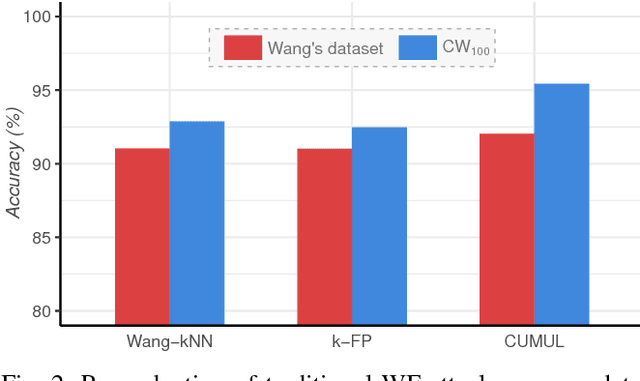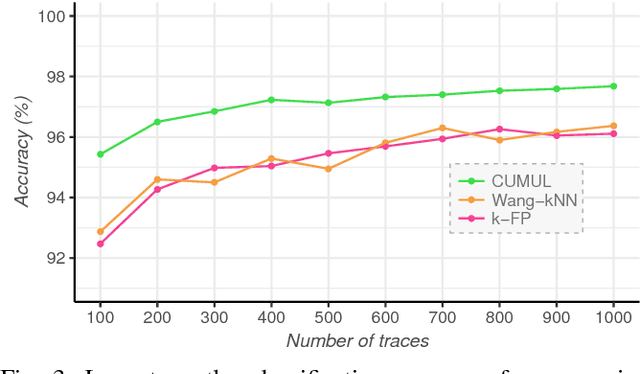Automated Website Fingerprinting through Deep Learning
Paper and Code
Dec 05, 2017



Several studies have shown that the network traffic that is generated by a visit to a website over Tor reveals information specific to the website through the timing and sizes of network packets. By capturing traffic traces between users and their Tor entry guard, a network eavesdropper can leverage this meta-data to reveal which website Tor users are visiting. The success of such attacks heavily depends on the particular set of traffic features that are used to construct the fingerprint. Typically, these features are manually engineered and, as such, any change introduced to the Tor network can render these carefully constructed features ineffective. In this paper, we show that an adversary can automate the feature engineering process, and thus automatically deanonymize Tor traffic by applying our novel method based on deep learning. We collect a dataset comprised of more than three million network traces, which is the largest dataset of web traffic ever used for website fingerprinting, and find that the performance achieved by our deep learning approaches is comparable to known methods which include various research efforts spanning over multiple years. The obtained success rate exceeds 96% for a closed world of 100 websites and 94% for our biggest closed world of 900 classes. In our open world evaluation, the most performant deep learning model is 2% more accurate than the state-of-the-art attack. Furthermore, we show that the implicit features automatically learned by our approach are far more resilient to dynamic changes of web content over time. We conclude that the ability to automatically construct the most relevant traffic features and perform accurate traffic recognition makes our deep learning based approach an efficient, flexible and robust technique for website fingerprinting.
 Add to Chrome
Add to Chrome Add to Firefox
Add to Firefox Add to Edge
Add to Edge